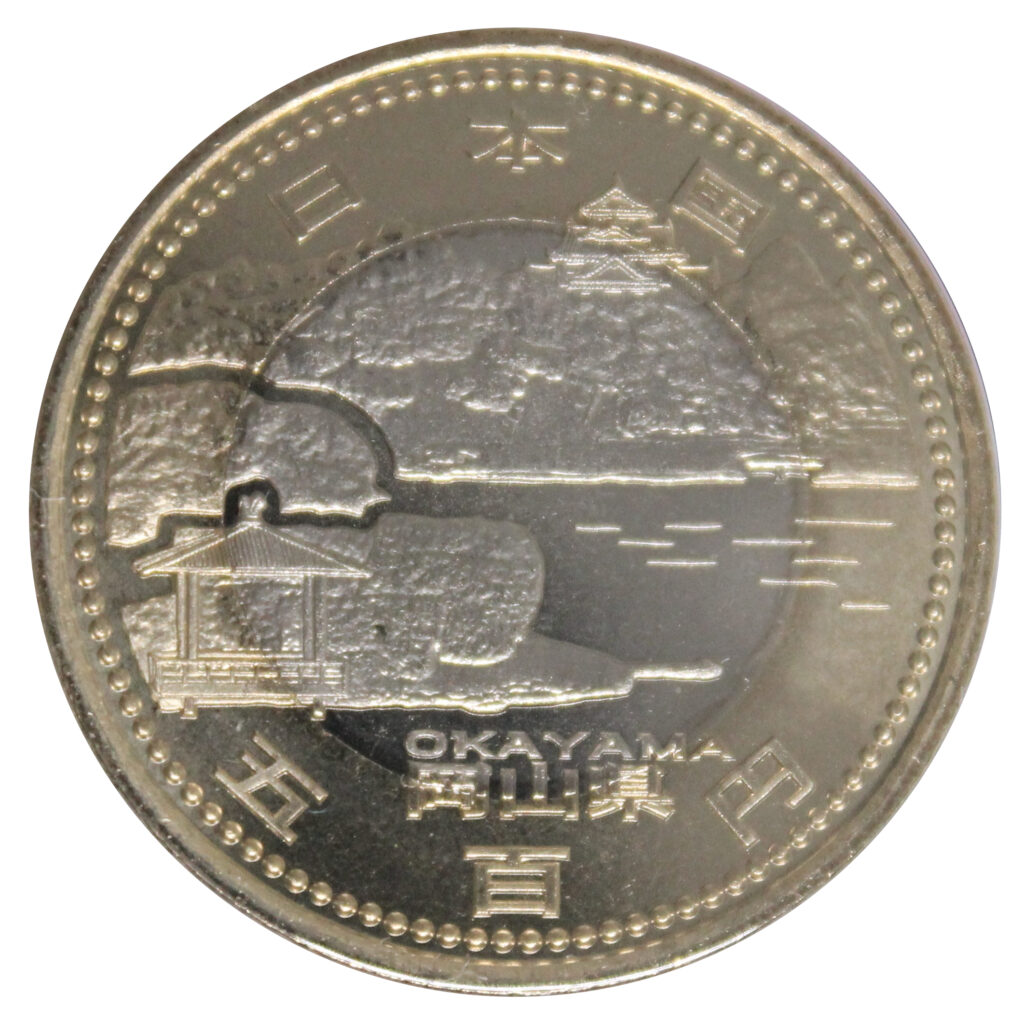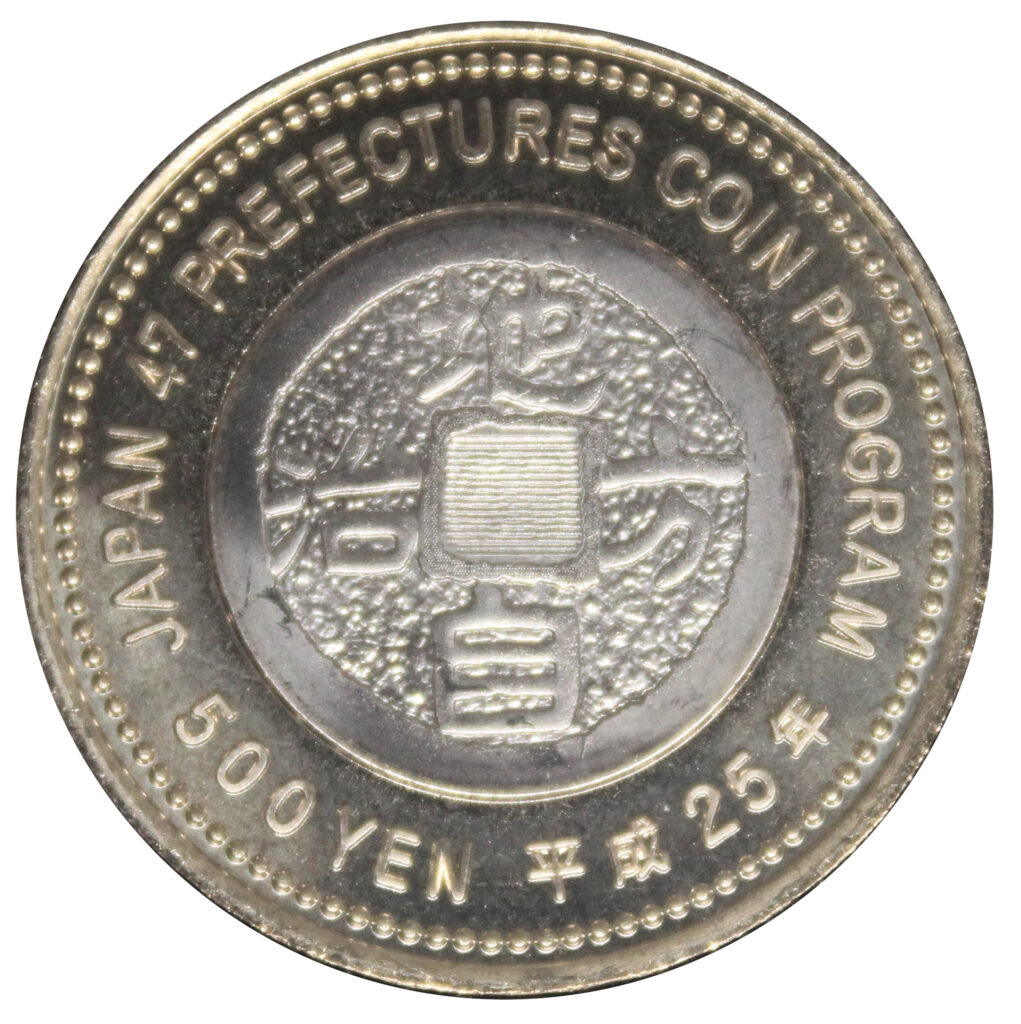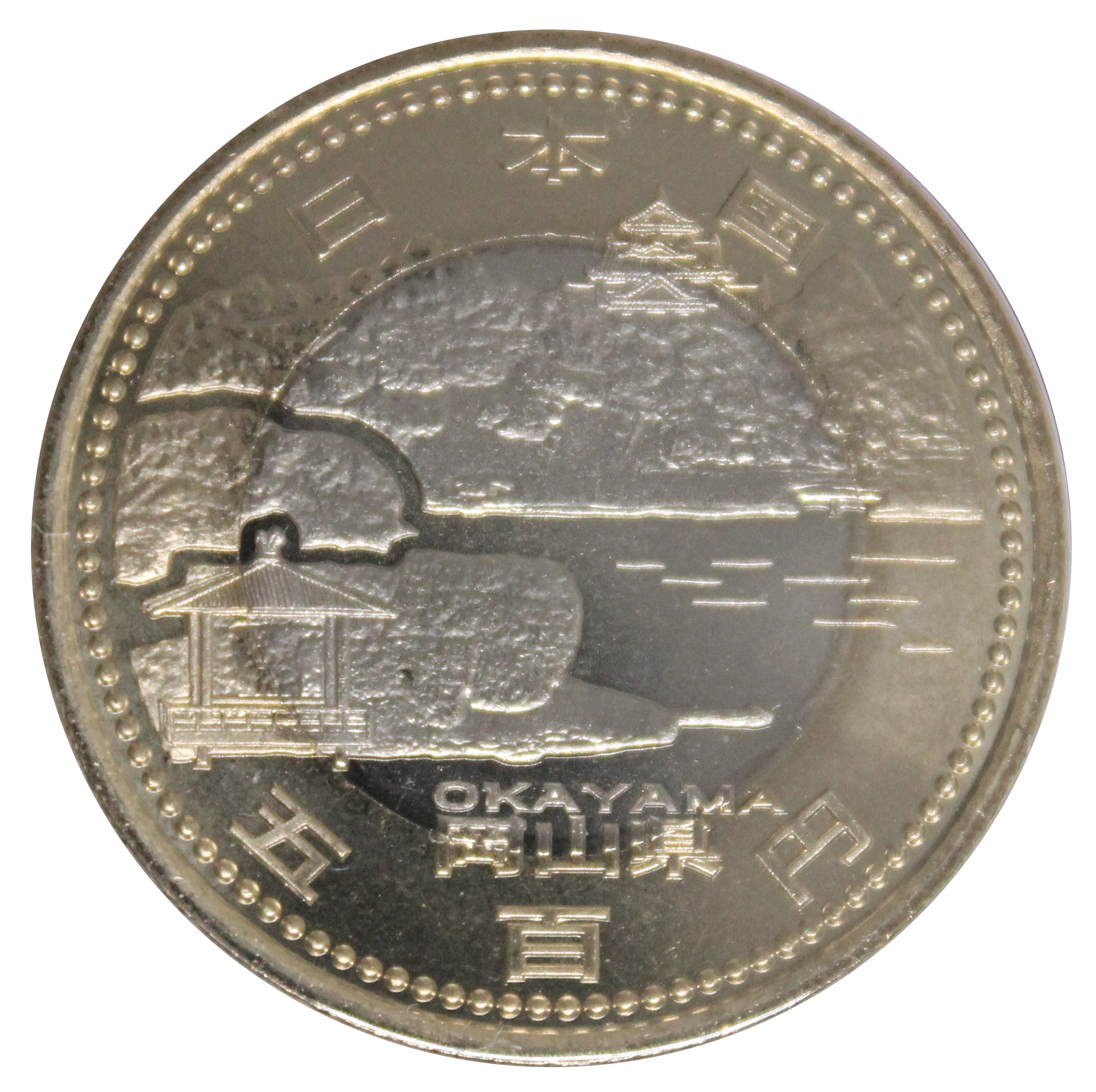

| Material | Nickel-brass, Cupronickel and Copper |
| Composition | Copper 750 Zinc 125 Nickel 125 |
| Weight | 7.1g |
| Diameter | 26.5mm |
| Year of Production | 2013 |
A 500 yen coin made to commemorate the 60th anniversary of the enforcement of the Local Autonomy Law.
There are 47 types, the same as the number of prefectures in Japan.
It is made by combining two technologies: “Cladd,” in which another type of metal plate is inserted between two metal plates, and “Bicolor,” in which another metal is placed in a disk. “Baikara Clad
There are jagged edges on the sides, and only four places are shaped differently from the rest.
The reverse side is the same.
The design imitates the coins of the Edo period.
It is written in kanji as “local Autonomy” in four characters.
The year and “JAPAN 47PREFECTURES COIN PROGRAM” are engraved.
The obverse has a different design for each prefecture.
The OKAYAMA type depicts the famous garden, Korakuen.
Korakuen was built in the Edo period (1700) by the feudal lord of Okayama at the time, and continued to be expanded and renovated by successive feudal lords, allowing visitors to get a glimpse of the trends of the time.
Currently owned by Okayama Prefecture, it has been designated a Special Place of Scenic Beauty by the national government, and is counted among Japan’s Three Great Gardens alongside Kenrokuen in Kanazawa and Kairakuen in Mito.
Its greatest feature is its vast grounds, covering a total area of 144,000 m2.
There are many sights to see within the garden, such as ponds, hills, pine trees, and cherry blossoms, so you’ll never tire of looking at them.
The waterways that run through the garden harmonize with the beautifully manicured lawns, and the beauty of the garden as a whole is magnificent no matter where you look.
There are also practical things such as rice fields and tea fields, which are the polar opposite of beauty, but they symbolize human activities, and the fact that the garden evokes the original scenery of good old Japan sets it apart from other gardens.
As depicted in the blueprints, Okayama Castle, one of Okayama’s most famous landmarks, can be seen from the garden, and the contrast between the garden and the castle is also one of the highlights.

